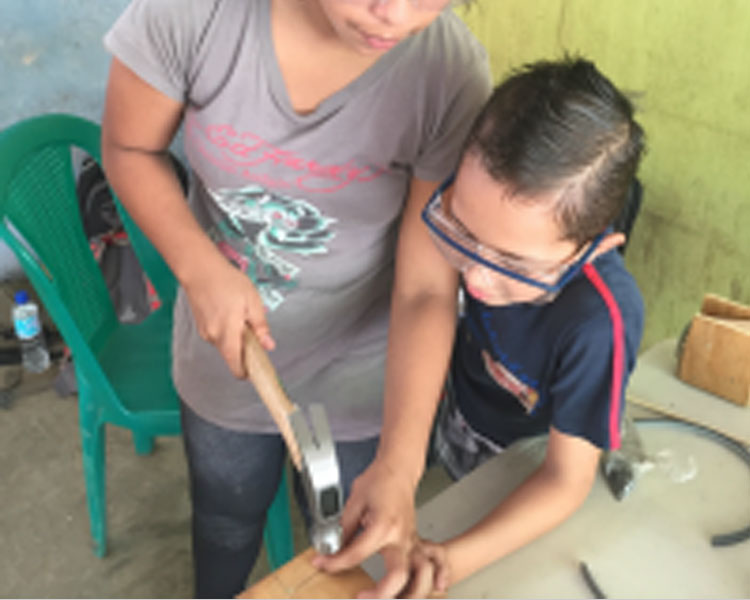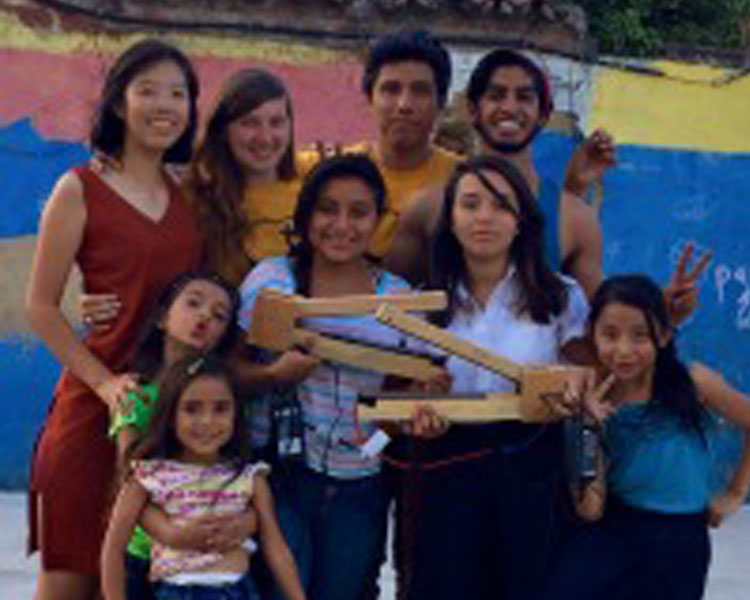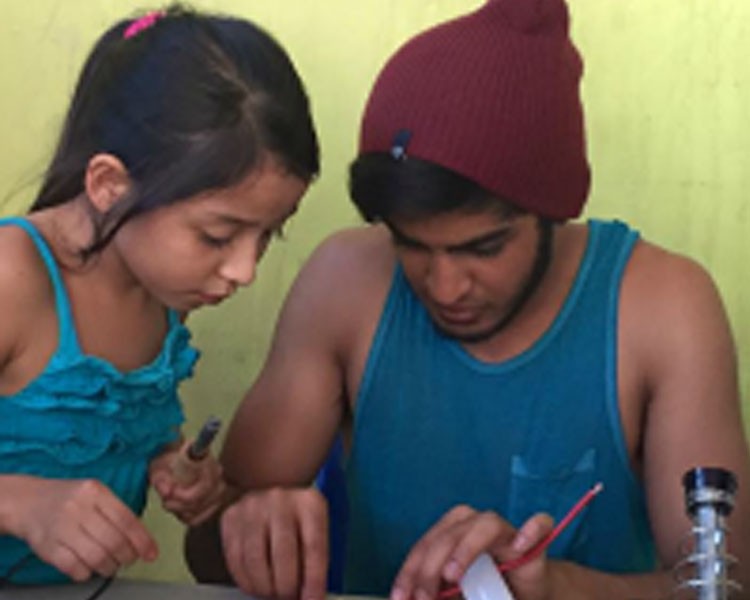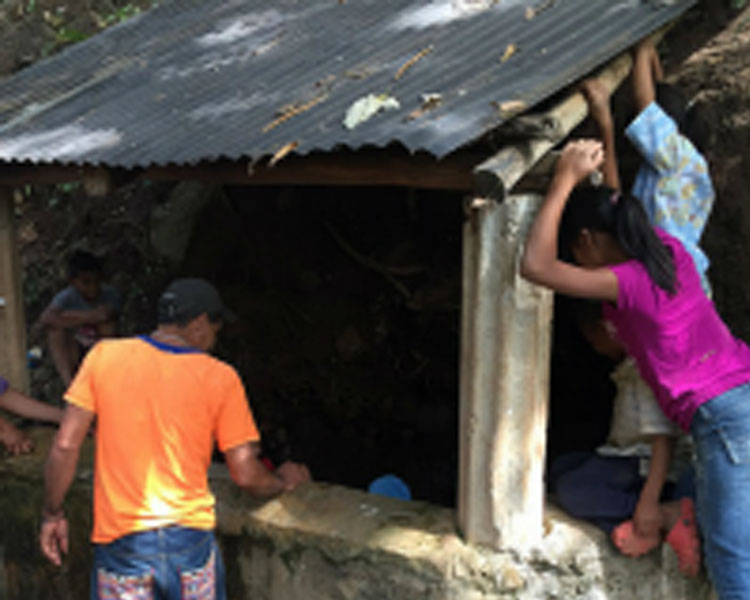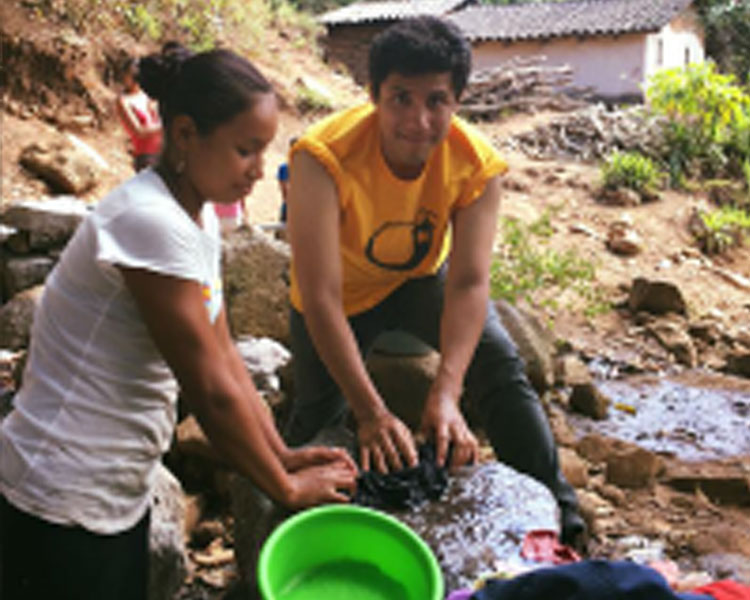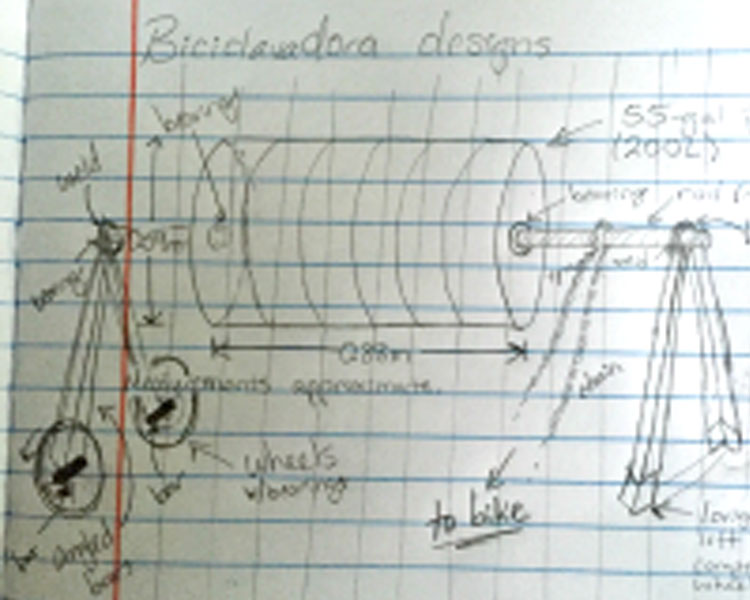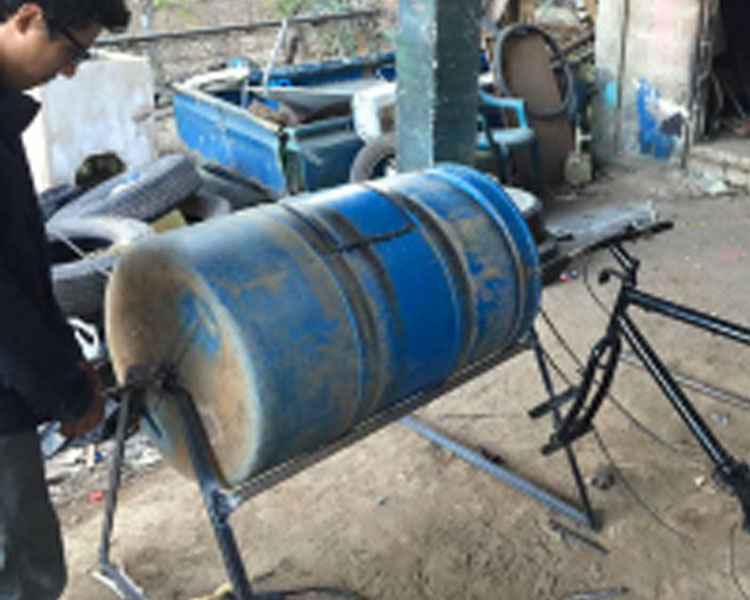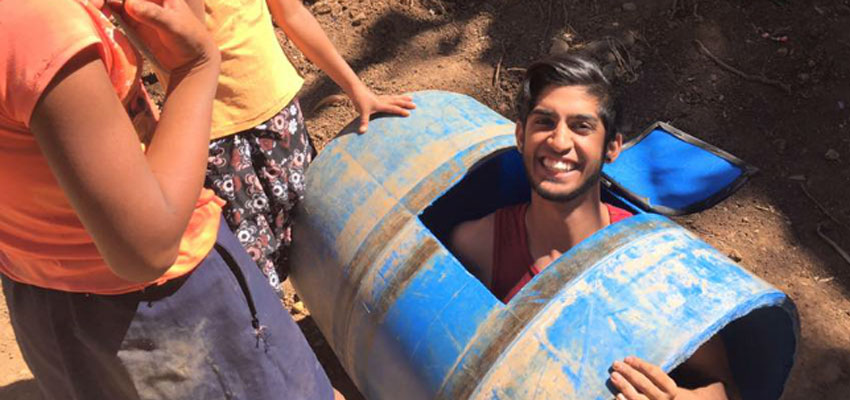
Starting the new year with adventure and ambition, I had the amazing opportunity to spend three weeks in Santa Ana, El Salvador as a part of MIT's D-Lab: Development class. I was joined by fellow classmates Alan and Clarissa, D-Lab instructor and education coordinator Libby Hsu, as well as D-Lab El Salvador team members from ealier years, Elaine and Kate. Together, we represented a variety of backgrounds and experiences we were excited to share with ASAPROSAR, the NGO we'd be working with during our stay.
Preparing for the trip, we separated it into two parts. First, we were asked to continue working with los Angeles Descalzos, or the Barefoot Angels program, as we had before. Barefoot Angels is a children's program run by ASAPROSAR in the city; D-Lab has worked with them previously, teaching them how to make soap and shampoo to sell in the local market. This year, we continued the project by teaching them to build heat sealers to package their products themselves.
Second, we planned to spend two weeks at a homestay in the nearby town of El Coco and work in the village of El Sauce. There, we would be working with women to assess and tackle problems faced by the community members. We hoped to use Creative Capacity Building to inspire the residents of El Sauce to continue working to fix their problems long after we left.
Our first encounter with Pupusas
Once we arrived in El Salvador, we were immediately whisked away to experience the wondrous food known as pupusas. Highly customizable and surprisingly simple, pupusas would come to be our go-to food of choice around the country (but no one complained).
More important, after a long drive in the bed of a pickup truck that would come to represent the majority of our travel experience, we arrived at ASAPROSAR. Wasting no time at all, we had several meetings discussing our goals for the next three weeks and what we would need to accomplish all of our goals. The very next day, we bought materials and began planning for the week ahead of us.
Barefoot Angels
The first week was spent with the Barefoot Angels. Because of school, we had a separate morning session and an afternoon session every day. We started with a crash course on electronics and incorporated activities to explain concepts like voltage and current. At one point, Libby (a resistor) was attempting to stop children (electrons) running past her to explain the idea of resistance. I think the children got the point—even if they didn't, at least we all shared a laugh.
Moving forward, we had kids as young as seven years-old operating tools such as hammers and saws building the heat sealers! The construction of the heat sealer saw some minor road bumps—we needed better glue and better electronics. With help from the children, we were able to find materials nearby and build a working heat sealer with both the morning and afternoon groups. It was exciting to see the final product that the kids had sawed, glued, screwed, and soldered to create.
Well repair
The following week, we made our way to Niña Berta's house where we would be staying on weekdays. Initially, we did some research for a solar lantern project run by ASAPROSAR and visited families in the village of El Sauce. However, we soon organized a community meeting to determine what we wanted to work on as a team. The women identified two main problems—protecting their water supply and washing clothes.
We discovered that the well from which people obtained water every morning had a lot of room for improvement. The “well” was essentially an above-ground basin that stored the flowing groundwater nearby. The basin was small and overflowed regularly. It lacked an effective cover to prevent trash and animals from falling in. During the rainy season, chemical-mixed water from crop fields would runoff into the water.
Working together, we came up with several plans to improve the situation: we built up the height of the walls to retain more water. Sheet metal was placed over the top of the well to protect it from the elements. A new wall was built to divert runoff water away from the water supply. Finally, we installed a faucet to allow people to obtain water. It was impressive to see how dedicated everyone was to protecting the well - we had men and women offering ideas and working together to do something incredible.
And washing machines: bicilavadora II
The second project was to ease the process of washing clothes for women. Many women (and young girls!) spent up to two and half hours a day, several days per week washing clothes. We decided to build a washing machine that operated with bicycle power. D-Lab students had build a bicycilce-powered laundry machine—the bicilavadora—in 2009 in Peru and we decided to iterate on this design. We had many obstacles to overcome for this project—most of them being limitations in supplies and tools. Whenever we came to a roadblock, however, someone would throw out an idea and we eventually come to finishing the machine on the very last day in El Sauce. The nature of the project led to many tasks being done in parallel—building a basket, welding a frame, attaching a bicycle—so it was amazing to see it all come together at the end and see it in action.
Baby goats and volcanoes
While we did a lot of great work, we definitely found time to explore and enjoy what was a brand new experience for many of us. We hiked down a caldera and swam in the crater lake, and we also tried our hand at surfing on a beautiful beach. We made our own pupusas and tried french fries dipped in mayo for the first time. Whether we were in the city enjoying the colors and cuisine, or the countryside playing with baby goats and climbing trees, we all found something magical on our trip. As for the future, Alan and I plan on going back over the summer to continue working with our new friends in El Sauce.
Hasta luego,
Samir
